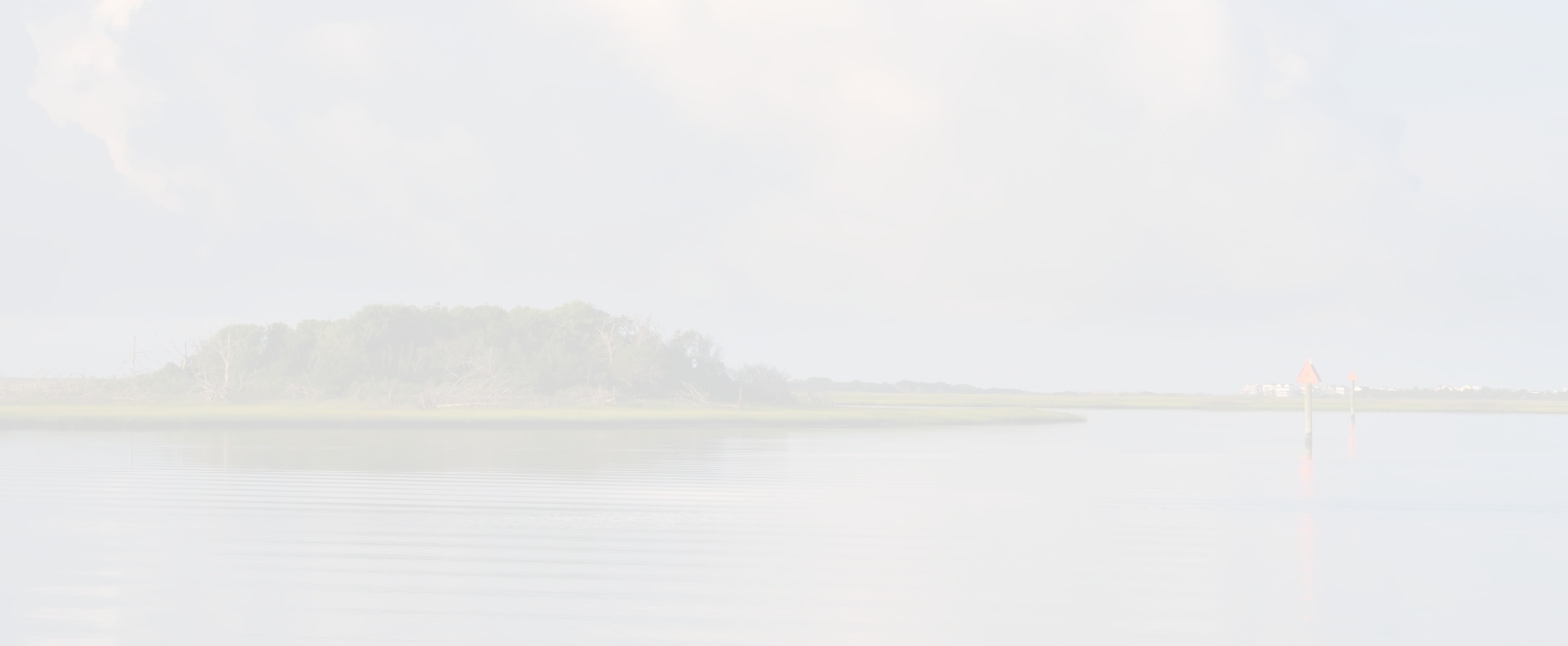US Marine Corps Base Camp Lejeune is a 156,000 acre US Military Base in North Carolina, encompassing the New River tidal estuary and bordering the Atlantic Ocean. The base has been utilized by the military since 1941. The base and community are currently home to around 170,000 individuals, including active duty, dependent, retiree and civilians.

In the early 1980’s, it was found that two water-supply systems on the Base contained numerous chemicals at elevated levels. Specifically, the Tarawa Terrace and Hadnot Point water treatment plants were found to be distributing contaminated water. These plants collectively served enlisted-family housing, barracks for unmarried service personnel, base administrative offices, schools, recreational areas, the base hospital, an industrial area, and the Holcomb Boulevard water system. Several wells supplying water to these plants were found to be contaminated, and ultimately closed in 1984-1985. The full spectrum of chemical contamination of the wells may not be known, as tests taken from special monitoring wells, after closure of the contaminated wells, have detected fuel constituents and metals which were not routinely analyzed during the 1980’s sampling. A comprehensive list of chemicals detected in the water has been reported [1].
What toxins were in the water at Camp Lejeune?
The two main contaminants of the wells were identified to be:
- Trichlorethylene (TCE)
- Perchloroethylene (PCE)
Numerous other contaminants were also found at varying levels.
Perchloroethylene (PCE)
PCE is a dry-cleaning solvent and was the primary contaminant of the Tarawa Terrace water-supply system originating from spills and improper disposal. The primary source of PCE in Tarawa Terrace is thought to be a former dry-cleaning business which opened, and thus contamination may have begun, in 1953. The contamination of Hadnot Point came from multiple sources including an industrial area, a drum dump, a transformer storage lot, an industrial fly ash dump, an open storage pit, a former fire training area, a site of a former on-base dry cleaner, a liquids disposal area, a former burn dump, a fuel-tank sludge area, and the site of the original base dump.
Trichlorethylene (TCE)
TCE and trans-1,2-dichloroethylene (DCE) were the primary pollutants detected, with PCE also detected. No estimates of the timing of initial contamination of the Hadnot Point feeding wells are available due to the multiple sources, though it is known that the plant began operating in 1943.

It is difficult to determine the exposure to the contaminants from the wells as levels were not tested until the 1980’s. Further, determining the precise contaminant exposure of individuals is nearly impossible. Computer modeling has been performed [2] to try to gauge levels of the various contaminants in the water, though again, exposure to that water will vary from individual to individual. Maslia et al. have reported that PCE concentrations in the Tarawa Terrace water treatment plant likely reached a maximum monthly average value of 183 μg/L and a maximum measured value of 215 μg/L. This exceeds the US Environmental Protection Agency’s current maximum contaminant level (MCL) of 5 μg/L. Maslia et al. further found that at Hadnot Point, TCE concentrations likely reached a maximum monthly average value of 783 μg/L and a one-time maximum value of 1400 μg/L between 1953 and 1984. The current MCL for TCE in drinking water is 5 μg/L.The exact exposure to the contaminants in the water likely varied over the time period and among individuals, though this was not directly measured historically. Maslia et al. have modeled that drinking water TCE concentrations from Hadnot Point substantially exceeded the MCL during the entire period studied, likely beginning in either August 1953 or as early as November 1948. PCE levels in drinking water were modeled to exceed the MCL from 1975 to 1985 for Hadnot Point and between 1957 and 1987 for the Tarawa Terrace study area.
In summary, exposure was elevated for a large historical period based on model reconstructions, though exact and direct measurements were not taken and thus remain unclear. Additionally, it is important to reiterate that individual exposure to the contaminants can vary greatly based on many factors.
How exposure to contaminated water at Camp Lejeune caused health issues
In addition to direct exposure to contaminated water through ingestion or contact, exposure to contaminants originating in ground water can be through breathing contaminated air. In the process called vapor intrusion, volatile chemicals in contaminated groundwater can evaporate and move upward through the ground into indoor air or overlying and nearby buildings. This possible route of exposure at Camp Lejeune is currently under investigation by the ATSDR (Agency for Toxic Substances and Disease Registry). Assessments of about 190 buildings on the camp are expected to be reported in 2022 [7]. While important work, it is important to acknowledge that this research may not represent the historical long-term concentrations and exposures due to extensive groundwater remediation undertaken since the 1980’s.
Vapor intrusion is an established route of exposure to TCE and PCE. Archer et al. have shown that indoor air concentrations of TCE were positively associated with TCE blood concentrations in participants of their study [8]. Moreover, blood concentrations of TCE of residents of homes with air concentrations above 1.6 μg/m3 were approximately 50 times higher than participants with no detectable TCE in indoor air. While this study does not indicate a direct causality to health issues, it clearly identifies a possible risk of exposure due to elevated TCE levels from vapor intrusion.
Camp Lejeune Water Contamination Illnesses
A study by Forand et al. looked at the prevalence of adverse birth outcomes among mothers exposed to TCE and PCE in indoor air through vapor intrusion at a site of known contamination in New York State [9]. The work found elevated rates of cardiac defects with both TCE and PCE air exposure, and those exposed to TCE in air had elevated rates of low birth weight and fetal growth restriction. Regardless of the outcomes of the pending ATSDR report, it is evident that risk of exposure to these volatile chemicals in indoor air was likely elevated historically in various sites across Camp Lejeune.

Studies on individuals from Camp Lejeune have not generally provided direct evidence of health consequences being caused directly by water contamination. The primary reason for this may simply be due to a small number of patients, an inability to separate out effects of individual chemicals as people were exposed to mixtures of chemicals, and the diverse genetic and environmental factors at play for each individual patient. A thorough review of the data regarding Camp Lejeune exposures in 2009 found the majority of health outcomes to fall into a category of “inadequate/insufficient evidence to determine whether an association exists”. For the reasons mentioned above, the authors state that associations between exposure and disease cannot be ruled out despite this categorization [1]. Medical providers are noting and publishing cases of various conditions from individuals exposed at Camp Lejeune (ex. [3]), potentially indicating risk to individual patients which may not necessarily be clearly demonstrated in epidemiology studies.
Studies have directly associated TCE and DCE with adverse health effects in both animals and humans. The Department of Human Health Services has classified TCE as “known to be a human carcinogen” based on direct evidence from humans. The International Agency for Research on Cancer and Environmental Protection Agency (EPA) have made similar categorizations. Human studies indicate that TCE exposure can cause kidney cancer in humans, and associations between exposure and non-Hodgkin’s lymphoma in humans have been shown. This categorization does not mean that associations with other health conditions are not possible, but strong evidence has not been generated to date in humans.
For example, evidence of liver cancer risk elevation has been shown. In animals, increased liver cancer, kidney cancer, testicular cancer, leukemia, and lung tumors have been demonstrated. Other health effects shown to be associated with TCE exposure include scleroderma, reproductive issues in males, and harmful effects, beyond cancers, on the nervous system, liver, respiratory system, kidneys, blood, immune system, heart, and on body weight. Birth defects may be linked to TCE exposure as well, as some human studies suggest TCE may cause spontaneous abortion, congenital heart defects, central nervous system defects, and low birth weight [4].
Similarly, an ATSDR Public Health Statement states that PCE [5] may harm the nervous system, liver, kidneys, reproductive system, and unborn children. Human studies have shown that PCE exposure may also elevate the risk of getting cancers such as bladder cancer, multiple myeloma, or non-Hodgkin’s lymphoma. In animals, PCE exposure can cause liver, kidney, and blood system cancers. PCE is categorized by the EPA as “likely to be carcinogenic to humans by all routes of exposure”, and similarly categorized by the International Agency for Research on Cancer and the National Toxicology Program. ATSDR states that while a few studies in humans suggest that exposure to PCE increases the number of babies with heart, oral cleft, or neural tube defects, the studies were not large enough to provide a clear answer regarding this link. More recently, Ascengrau et al. have recently reviewed a series of studies on a population exposed to PCE in Massachusetts and Rhode Island that prenatal PCE exposure is associated with delayed time to pregnancy, increased risks of placental abruption, stillbirths from placental dysfunction, and other birth defects, highlighting the importance of considering health effects on pregnant women and developing fetuses due to water contaminants [6].
Classification of TCE and PCE as known carcinogens was largely based on epidemiological data, i.e. data that showed an elevated number of cases within an exposed population. The mechanism of this carcinogenicity is less well established, though animal data suggests that TCE and PCE and the metabolites (break down products within the body) can be carcinogenic through mutagenic and/or genotoxic means and additionally damage cells and tissues through non-genotoxic means [4,5]. Mutagenic refers to a substance that can cause mutations in genes which are permanent and transmissible. Thus, when a cell divides and forms daughter cells, the mutation passes on. Genotoxic means that a substance can cause damage to the DNA in cells, however, this damage is not always mutagenic. Non-genotoxic means that a substance can directly cause damage directly to the cells, potentially impairing function. Collectively, the chemicals and their metabolites can certainly damage cells of various tissues. It is important to note that these changes, which can vary greatly, may not result in immediate illness, diagnosis, or cancer progression. Cancer can generally be thought of as a multi-step process including an initiation phase, a promotion phase, and a progression phase. At a high level, cellular changes can be observed in the initiation stage, though these may not initially be carcinogenic. A second exposure or trigger to other agents or bodily functions (such as inflammation) may then lead to a promotion stage and progression stage, where cancer becomes clinically impactful. This process is complex and highly variable [10].
To summarize, while direct evidence stating that exposure to contaminants at Camp Lejeune is a cause of health issues at an individual level does not exist, the totality of evidence suggests that indeed inhabitants were exposed to high levels of many contaminants. The exact exposure will vary greatly from individual to individual based on many factors, and the susceptibility of each individual to eventual health issues will also vary greatly. The contaminants to which the individuals were exposed are known to cause or elevate risk for many health conditions in humans and animals. The totality of elevated risk and scope of health conditions is likely not fully appreciated due to the difficulty in conducting the research needed.
Works Cited:
- National Research Council 2009. Contaminated Water Supplies at Camp Lejeune: Assessing Potential Health Effects. Washington, DC: The National Academies Press. https://doi.org/10.17226/12618.
- Maslia ML, Aral MM, Ruckart PZ, Bove FJ. Reconstructing Historical VOC Concentrations in Drinking Water for Epidemiological Studies at a U.S. Military Base: Summary of Results. Water (Basel). 2016;8(10):449. doi:10.3390/w8100449
- Jung K, Khan A, Mocharnuk R, Olivo-Marston S, McDaniel JT. Clinical encounter with three cancer patients affected by groundwater contamination at Camp Lejeune: a case series and review of the literature. J Med Case Rep. 2022;16(1):272. Published 2022 Jul 12. doi:10.1186/s13256-022-03501-9
- A Toxicological Profile for Trichloroethylene. US Department of Health and Human Services. Agency for Toxic Substances and Disease Registry. https://www.atsdr.cdc.gov/ToxProfiles/tp19.pdf
- A Toxicological Profile for Tetrachloroethylene. US Department of Health and Human Services. Agency for Toxic Substances and Disease Registry. https://www.atsdr.cdc.gov/ToxProfiles/tp18.pdf
- Aschengrau A , Winter MR , Gallagher LG , et al. Reproductive and developmental health effects of prenatal exposure to tetrachloroethylene-contaminated drinking water. Environ Sci Process Impacts. 2020;22(3):555-566. doi:10.1039/c9em00590k
- Vapor Intrusion Public Health Assessment. Agencey for Toxic Substances and Disease Registry. https://www.atsdr.cdc.gov/sites/lejeune/Vapor-Intrusion-PHA.html
- Archer NP, Bradford CM, Villanacci JF, et al. Relationship between vapor intrusion and human exposure to trichloroethylene. J Environ Sci Health A Tox Hazard Subst Environ Eng. 2015;50(13):1360-1368. doi:10.1080/10934529.2015.1064275
- Forand SP, Lewis-Michl EL, Gomez MI. Adverse birth outcomes and maternal exposure to trichloroethylene and tetrachloroethylene through soil vapor intrusion in New York State. Environ Health Perspect. 2012;120(4):616-621. doi:10.1289/ehp.1103884
- Basu AK. DNA Damage, Mutagenesis and Cancer. Int J Mol Sci. 2018;19(4):970. Published 2018 Mar 23. doi:10.3390/ijms19040970




